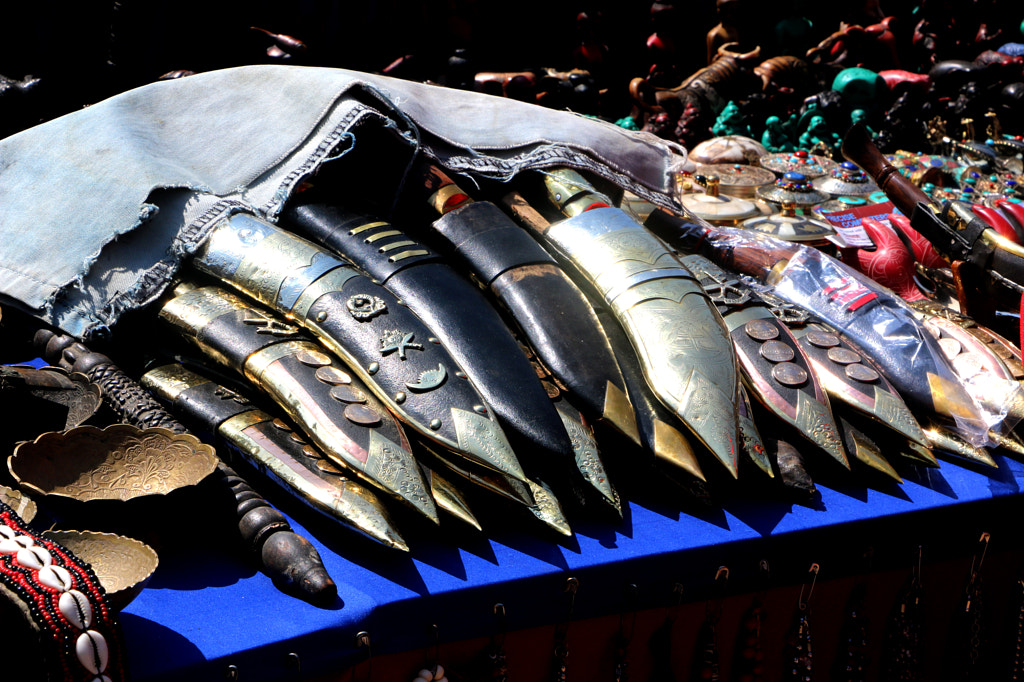Handmade
Khukuri: Iconic Weapon of Gorkhali Warriors
Khukuri is a well-known national weapon of Nepal. They are also used as utility knives. The unique shape and design separate the Khukuri from other knives over the world. Khukuri symbolizes strong character, justice, human dignity, freedom, and honor.

The knife has a well-defined recurve in its blade. It is the pride of Nepal and all the Nepalese. Khukuri was the iconic weapon of Gorkhali warriors which they had wielded for centuries. Nowadays people use khukuri as a symbol of wealth, social role, status, and prestige. However, it is still used by Gurkha soldiers all over the world.
It is famously known all over the world for the Gurkha army’s bravery and determination. During World War, I and World War II, the name Ghorkhali and Khukuri achieved fame all over the world and held the title of ‘Bir Gorkhali’.
They were used for the protection of the owners and to take down the enemies. The weapon had a very frightening reputation, and the opposing soldiers would get frightened by the Gurkha army and Khukuri.
History
It is believed that the knife has existed for 2500 years. History shows that ‘Kopis’ was used by Greeks in the 4th century. Kopis look like Khukuri but they are not the same. The knives have their own specialties. However, it was recognized after Nepali War in 1814- 16 A.D after the formation of the British Gurkha Army.

Khukuri is one of the oldest blades in the history of the world. There are some of the oldest Khukuri at the National Museum of Chhauni in Kathmandu which is 500 years old or even more.

Among those Khukuris, one of them belonged to Drabya Shah, the founder king of the Kingdom of Gorkha, in 1627 AD. The astonishing ability of the Khukuri was displayed in World War I and II, and the British war with India, where the Gurkha army supported the British army.
Design
Khukuri comes in different shapes and sizes. But, the traditional average Khukuri is usually one foot, about 14 to 18-inch blade and weigh about 450-900 grams. It has a short handle, which is made up of water buffalo bone or hardwood. However, in recent years the handles have been carved out of horns, bones or metal. The blades of the khukuri are made of steel and handmade.

Khukuri comes along two small knives, Chakmak and Karda at the back of Kukri sheath. Chakmak is an emergency sharpening knife and Karda is a small utility knife. Both sides of Chakmak are blunt in order for sharpening and Karda has a sharp edge. Khukuri also has a notch or CHO in front of the blade near the handle. Its purpose is to prevent blood from running down towards the handle. The sheath of Khukuri is made from wood wrapped in leather and its main objective is to protect from any kind of damage and cuts.
Making of Khukuri
The making of khukuri is very simple and basic, but it still has class and style of its own. Nepalese people still use conventional tools and traditional whereas primitive methods to make a Khukuri. In the past, they were made by Kamis.

Kami is a cast given to the people in Nepal and were usually blacksmiths or highly skilled people in making hand made iron products. The sheath of the Khukuri is made by Sarki.
Sarki is a cast in Nepal. They are highly skilled tanners and make the sheath of Khukuri by hand.
First, they heat the metal to a very fragile state, then beat and hammer the blade to meet its shape. Then they shape the khukuri and let it rest and make the signature notch in the end. After that, they start to make the sheath for Kukri. They are made by an animal’s horn or bone and Indian rosewood.
They start the next process which is tempering the blade and giving a sharp edge to it. It gets hard slowly and rinsing it with water only on the edge of the blade and not on the blade itself because if the water gets on the blade, it doesn’t get hard and strong and wrinkles may appear all over the blade. The handle is then attached with the Khukuri, the shining and buffing processing is done and tested. And are ready to be shipped.
Did you enjoy reading this blog post? Do share it. Also, if you are looking to buy then contact us. We will help you choose the best one and ship it to your place.

